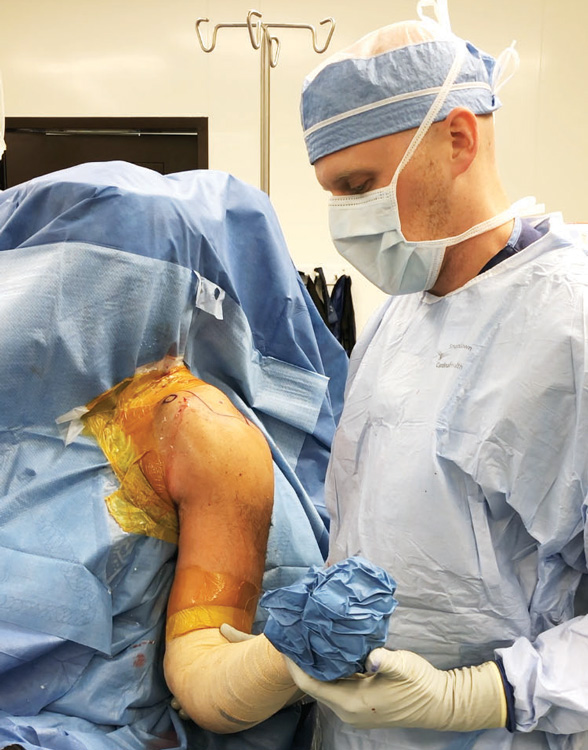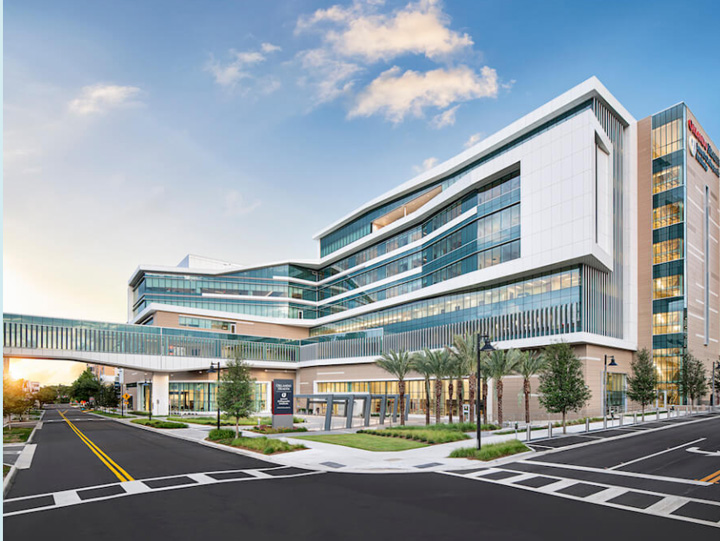Orthopedic surgeons’ association flags vital pros and cons.
 COLD SHOULDER Despite increasing calls by orthopedic surgeons to perform same-day shoulder replacements at ASCs, the procedures remain on CMS’ inpatient-only list in its 2024 proposal.
COLD SHOULDER Despite increasing calls by orthopedic surgeons to perform same-day shoulder replacements at ASCs, the procedures remain on CMS’ inpatient-only list in its 2024 proposal.
As orthopedic ASCs continue to be built and developed due to overwhelming demand for their services and the value and convenience they provide, the Medicare reimbursement picture for these facilities remains murkier than most would prefer. The latest example of this are the proposed changes for 2024 from the Centers for Medicare & Medicaid Services (CMS), which include a 3.2% cut in the conversion factor used to determine physicians’ reimbursements.
The American Association of Orthopaedic Surgeons (AAOS), submitting its formal comments on CMS’ proposed changes, says a statutory fix is needed to provide an annual inflationary pay update for physicians’ Medicare cases rather than the current annual calculation method, which AAOS President Kevin J. Bozic, MD, MBA, FAOS, says has resulted in orthopedic and other surgeons falling behind.
“By some estimates, the Medicare Physician Fee Schedule (PFS) conversion factor would have been double the amount being currently proposed, had it kept up with inflation,” he says. AAOS says the current reimbursement system makes it more difficult for its members to ensure high-quality specialty care and makes equitable access to that care more difficult for Medicare beneficiaries.
AAOS additionally opposed the use of Healthcare Common Procedure Coding System code G2211 for existing evaluation and management (E/M) visits, which would provide an add-on payment for complex cases that Dr. Bozic says will negatively impact surgeons and their patients. “This code is unnecessary due to the new office or outpatient E/M coding structure,” explains Dr. Bozic. “Existing codes are available for reporting the work and time across various complexity levels which make code G2211 duplicative of work that is already represented in the CPT code set.”
Also opposed by AAOS was CMS’ proposal to reimburse sacroiliac joint arthrodesis (CPT codes 27279 and 2X000) when performed in office settings.
AAOS liked some other aspects of CMS’ 2024 PFS plan. It supports CMS’ proposals to expand telehealth services, continue the implementation delay of the 2017-based Medicare Economic Index and indefinitely pause implementation of the Appropriate Use Criteria program for advanced diagnostic imaging services.
AAOS also commented on CMS’ 2024 Hospital Outpatient Prospective Payment and Ambulatory Surgical Center Payment Systems (OPPS/ASC) proposal, which despite strong requests from those in the specialty does not remove any additional orthopedic procedures from the inpatient-only (IPO) list. That includes total shoulder replacements, which many surgeons believe are safe to perform in outpatient settings and they are keen to do so. AAOS urged CMS to include experts’ knowledge and peer-reviewed evidence when making these decisions in the future.
Dr. Bozic says surgeons and their patients should decide on the appropriate setting for surgery and that no mandates or pre-authorization requirements should be necessary to determine whether a procedure should be inpatient or outpatient, even if a procedure moves out of the IPO list.
AAOS supported the decision to extend the hospital market basket-based updates for ASCs, requesting that CMS permanently update ASC payments based on this methodology.
AAOS also commented on CMS’ proposal to adopt the Risk-Standardized Patient-Reported Outcome-Based Performance Measure (PRO-PM) for elective total hip and knee arthroplasties in HOPD settings. “AAOS is encouraged by the move towards focusing on outcomes that matter to patients, and given our vast experience with PRO measurement, AAOS provided several recommendations for successful implementation, including allowing a slower ramp to mandatory reporting, clarifying the purpose of patient reported outcomes reporting and creating a reimbursement pathway for wider and easier adoption of outcomes measurement in the Medicare program,” wrote AAOS.
Click the links to download AAOS’ full letters to CMS regarding its PFS and OPPS/ASC proposals.
.svg?sfvrsn=be606e78_3)



.svg?sfvrsn=56b2f850_5)